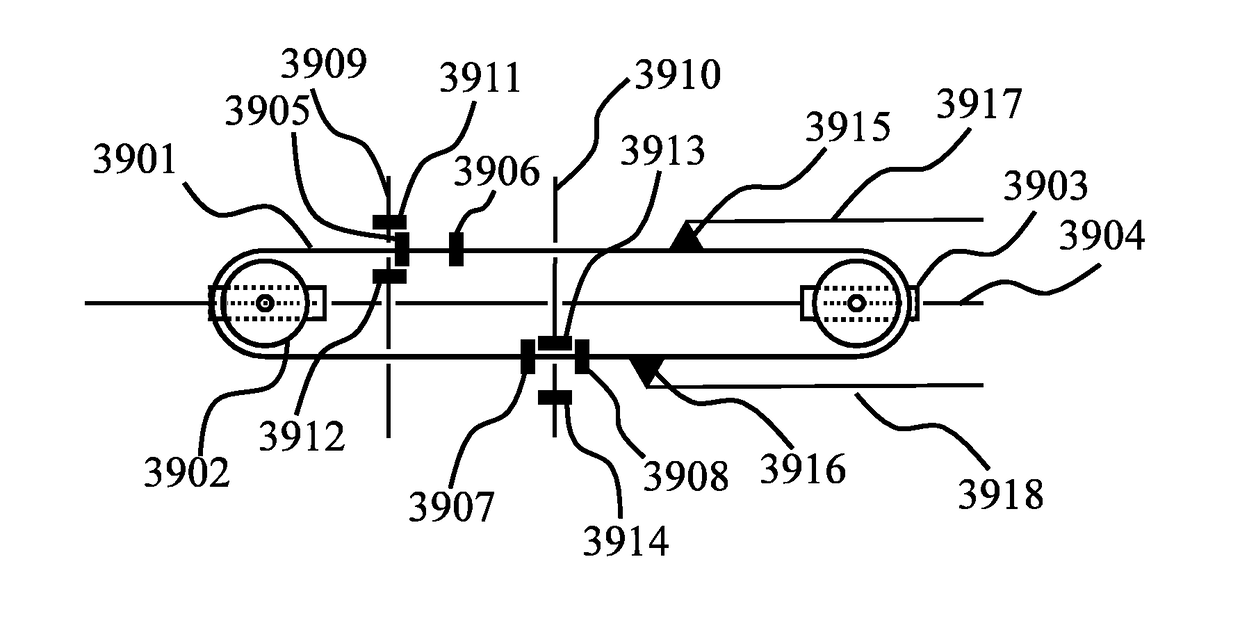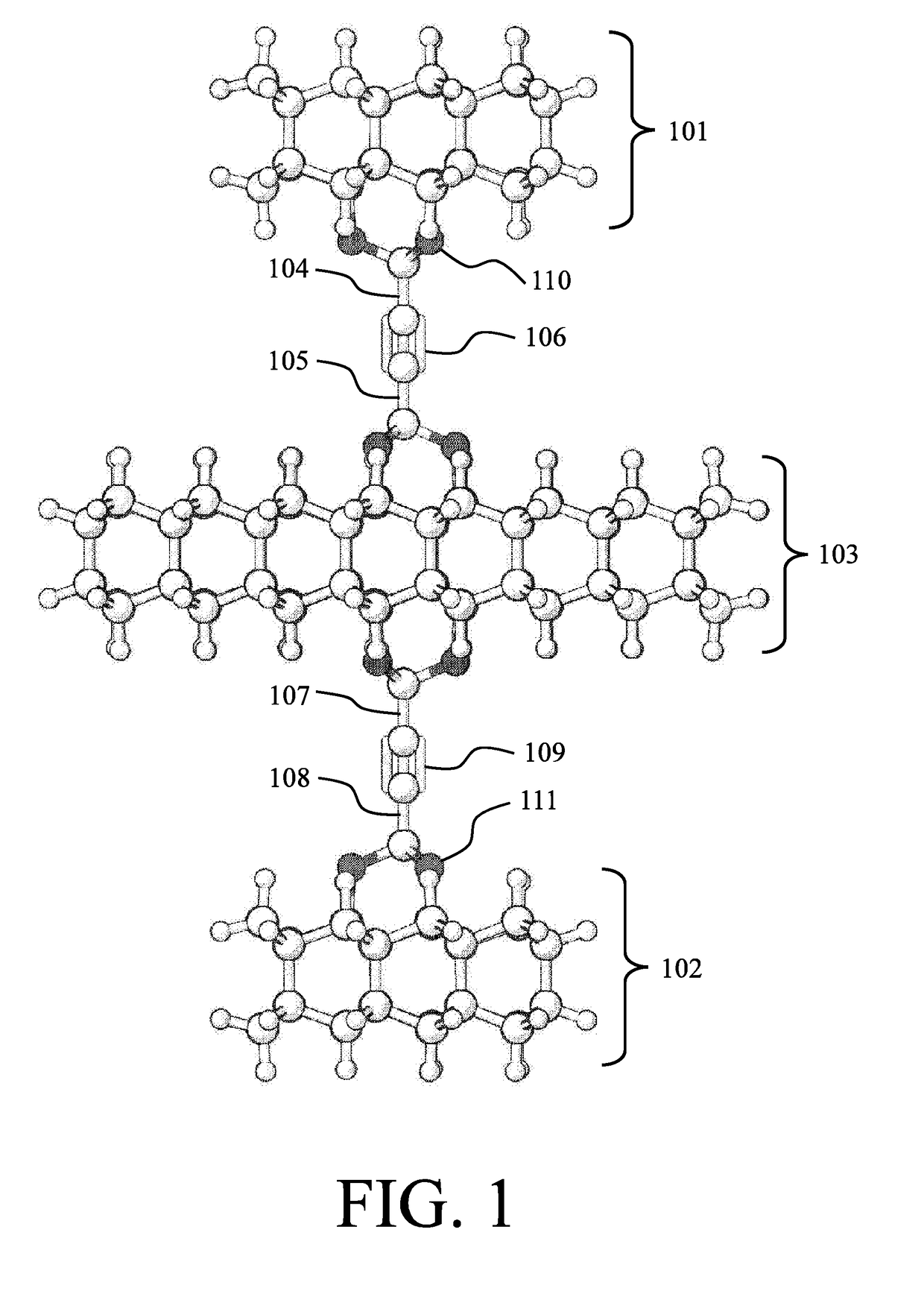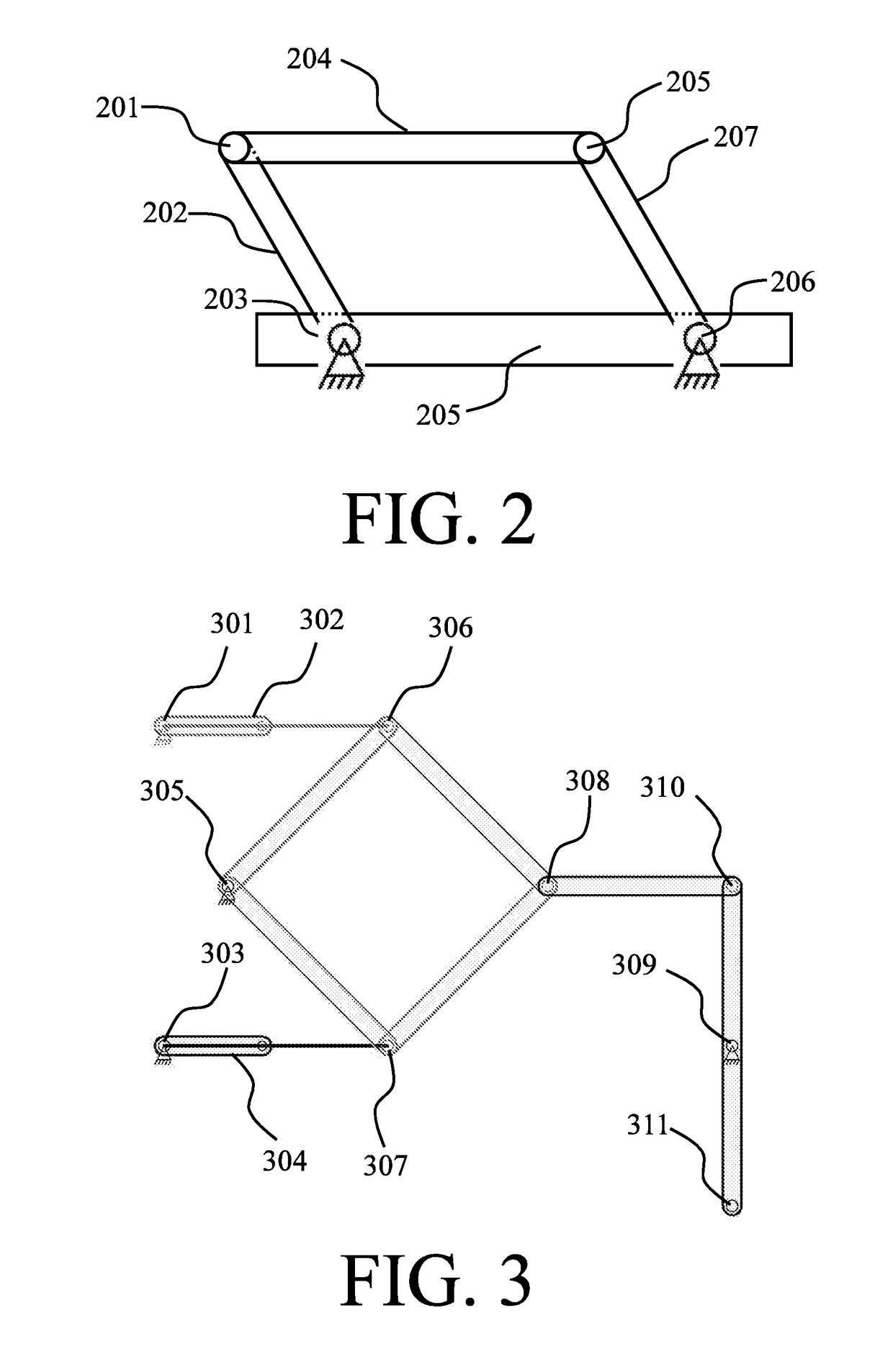Mechanical Computing Systems
a computing system and mechanical technology, applied in the field of computer technology or computer systems, can solve the problems of increasing the complexity of the device, the logic gate of the mechanical logic, and the inability of the device to be turing-complete, so as to achieve the effect of reducing the number of basic parts and reducing the energy dissipation
- Summary
- Abstract
- Description
- Claims
- Application Information
AI Technical Summary
Benefits of technology
Problems solved by technology
Method used
Image
Examples
Embodiment Construction
Definitions
[0060]The following definitions are used herein:
[0061]“Anchor block” means one or more rigid structures to which basic parts or higher-level assemblies can be attached, and which may also serve as heat sinks. Note that even when written in the singular, there may be more than one anchor block, as design needs dictate. The shape of an anchor block can be arbitrary (“block” should not be taken to mean that the structure is necessarily rectangular, or any simple shape). An anchor block can be made from any appropriate material, not limited to, but including any of the materials suggested herein from which basic parts could be made. An anchor block is assumed to be present as needed whether explicitly stated or not.
[0062]“Anchored” means attached to an anchor block, or otherwise rendered immobile with respect to other relevant basic parts or mechanisms. Anchoring may be permanent or conditional (e.g., depending on data inputs or clock signals), and a conditionally anchored pa...
PUM
| Property | Measurement | Unit |
|---|---|---|
| Mechanical properties | aaaaa | aaaaa |
Abstract
Description
Claims
Application Information
 Login to View More
Login to View More - R&D
- Intellectual Property
- Life Sciences
- Materials
- Tech Scout
- Unparalleled Data Quality
- Higher Quality Content
- 60% Fewer Hallucinations
Browse by: Latest US Patents, China's latest patents, Technical Efficacy Thesaurus, Application Domain, Technology Topic, Popular Technical Reports.
© 2025 PatSnap. All rights reserved.Legal|Privacy policy|Modern Slavery Act Transparency Statement|Sitemap|About US| Contact US: help@patsnap.com



